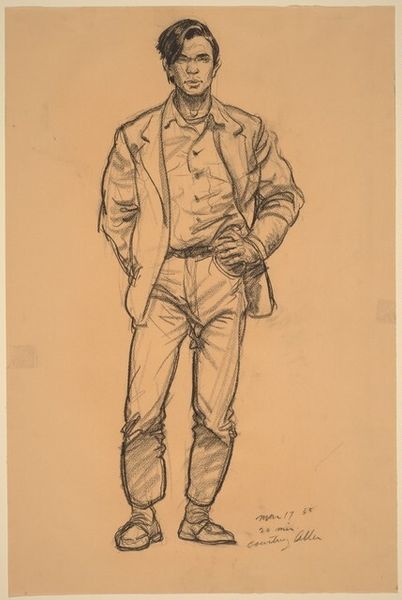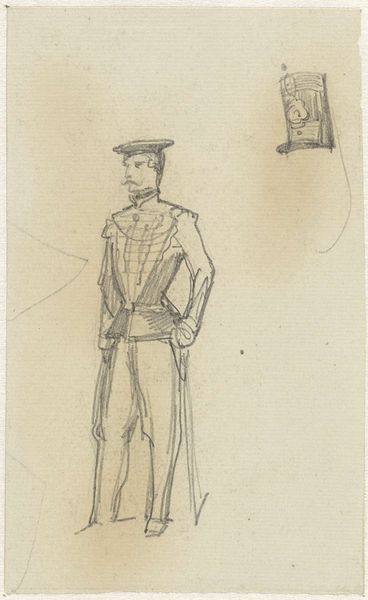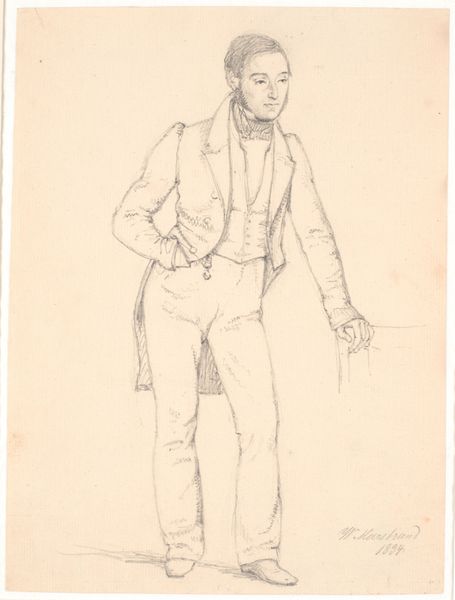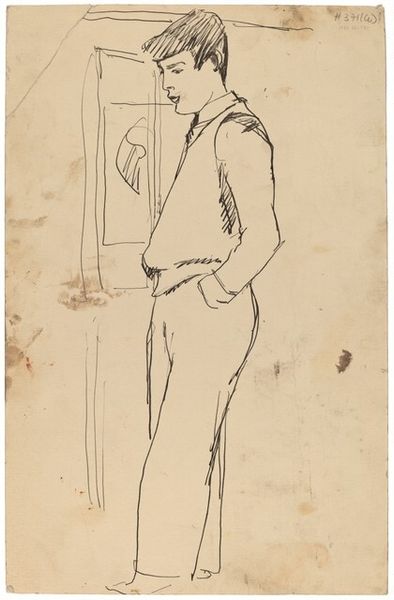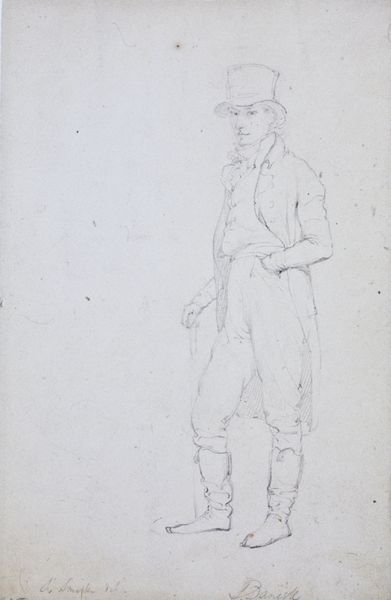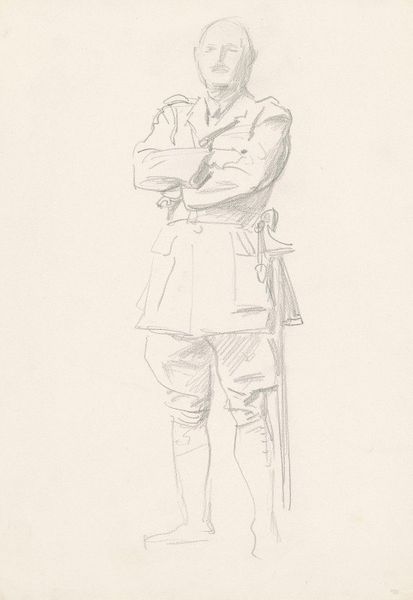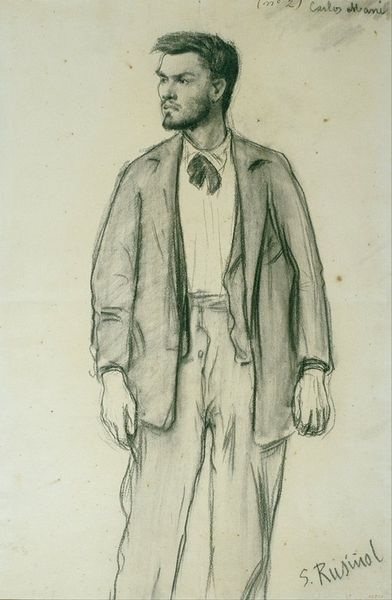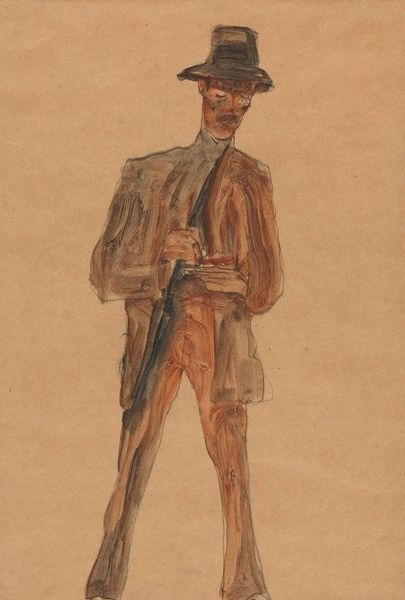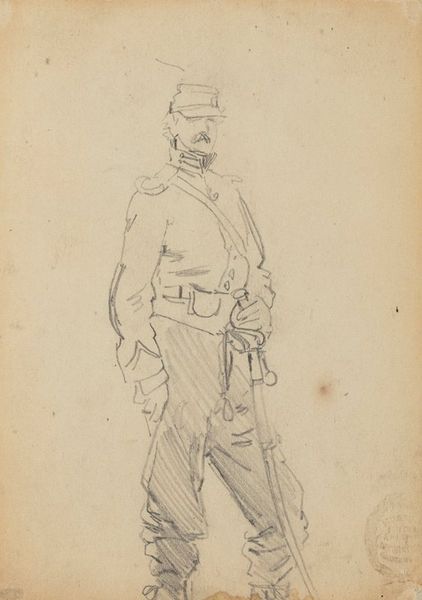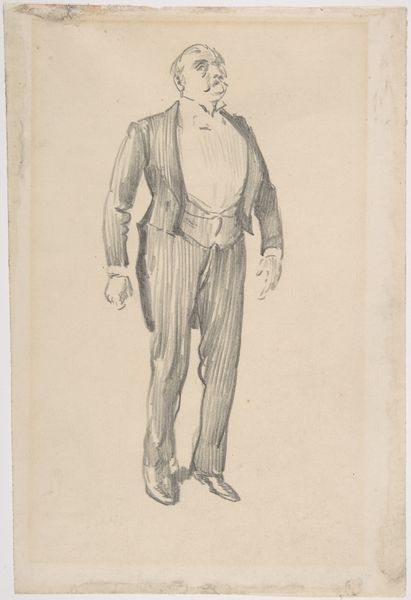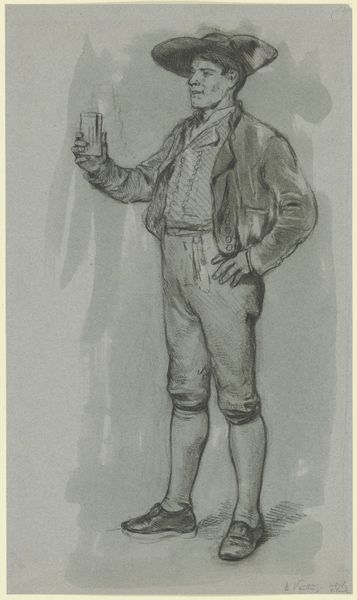
Copyright: Rijks Museum: Open Domain
Curator: Welcome to the Rijksmuseum. Before us, we have Johannes Tavenraat's "Man in Tiroler kostuum, van voren gezien," potentially created between 1858 and 1859. Tavenraat employs pen and ink in this drawing, showcasing a figure in traditional Tyrolean attire. Editor: Wow, my first impression? It's wonderfully whimsical! It feels almost like a character sprung from the pages of a fairytale. The light, airy quality of the sketchwork is simply enchanting. Curator: The figure's attire is quite significant. The Tyrolean costume was often a marker of regional identity, carrying with it associations of rural life and tradition, especially significant as industrialization increased during this period. This depiction begs us to consider how identities are performed and the meanings embedded within traditional garments. Editor: Absolutely, and it's interesting how Tavenraat captures him – there’s a sort of… melancholy about his eyes? He looks like he has stories tucked away, deep in the corners of his mind, just waiting to be told over a glass of something strong and maybe a crackling fire. It’s fascinating how such minimal lines can convey so much emotion! Curator: Agreed. It's important to consider how this work also intersects with broader narratives of Romanticism. There's an emphasis here on individualism and an idealized vision of nature and rustic life. Editor: Right, a total embrace of the spirit. Also, his belt! It cinches everything perfectly! Does that tell us anything about societal power structures? The constraints and constrictions put on... *everything*? Curator: Perhaps we could explore that, although here it might just represent standard attire, indicating the visual codes of the time, speaking to class, gender and regional identities. This sketchbook art functions not only as a record but also as a statement within the artistic context of the mid-19th century. Editor: Okay, point taken. It really makes me want to break out my own sketchbook. I feel so creatively invigorated just by standing here! Curator: Precisely. It is a piece that encourages us to examine the layers of historical context. We have been speaking a lot about how identity, both personal and collective, is portrayed and how it engages the social and political landscape. Editor: Agreed. Art always inspires. And hopefully inspires you to seek new, whimsical shores.
Comments
No comments
Be the first to comment and join the conversation on the ultimate creative platform.
